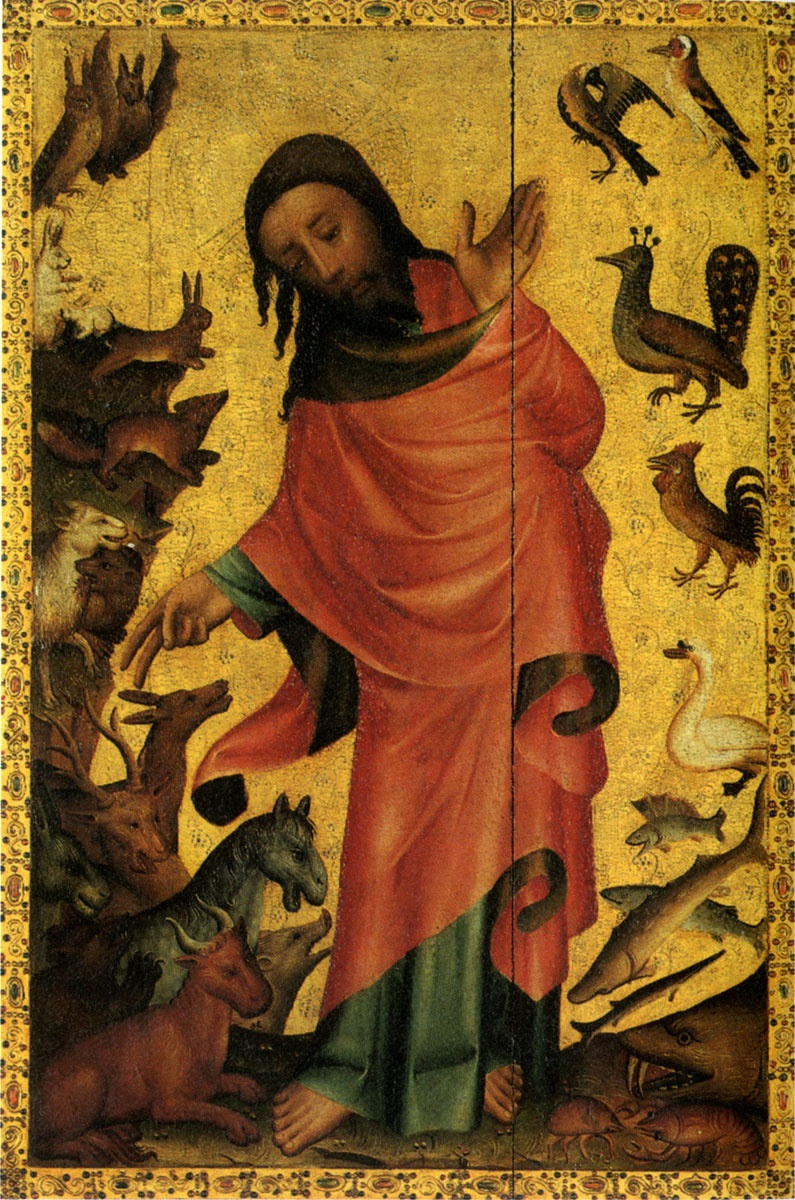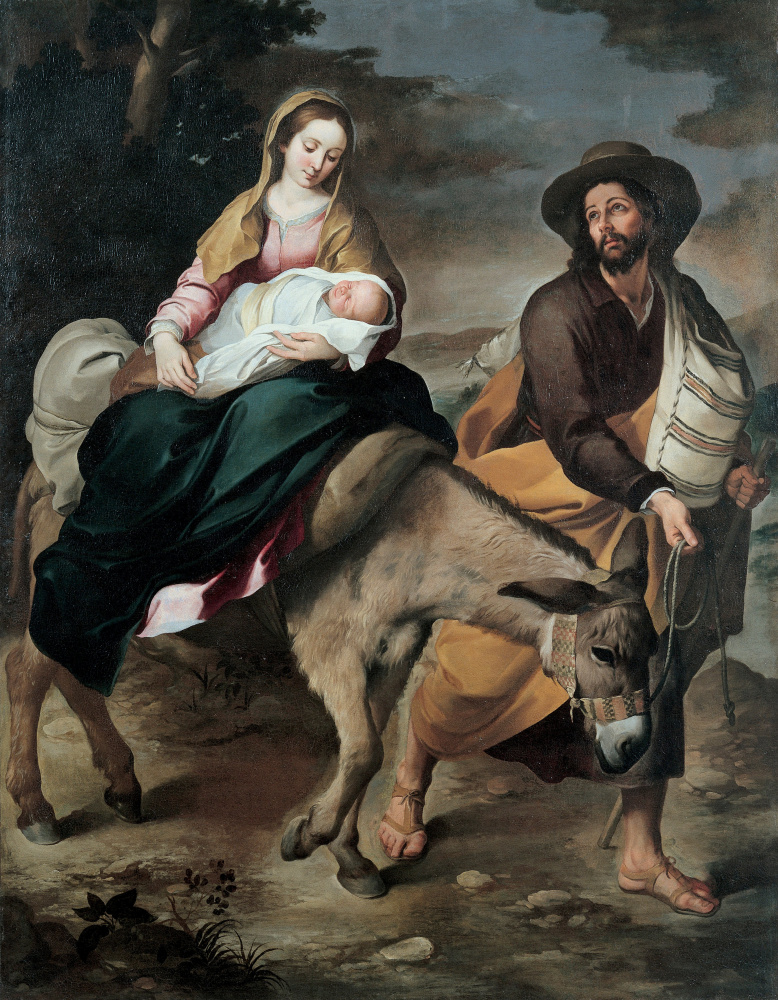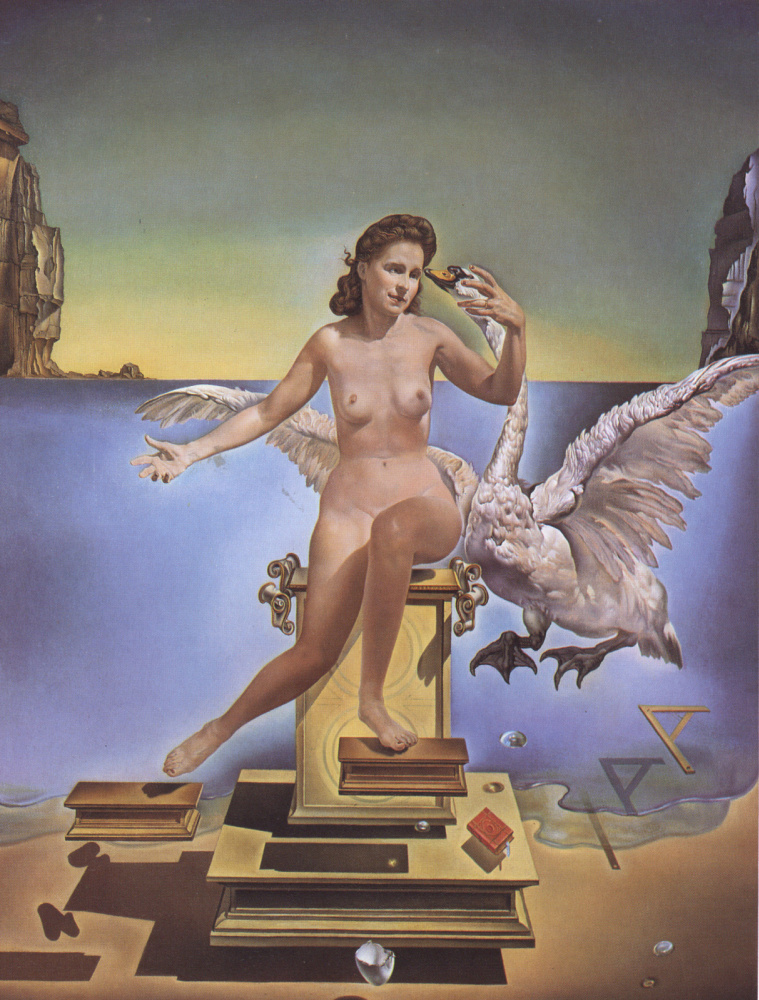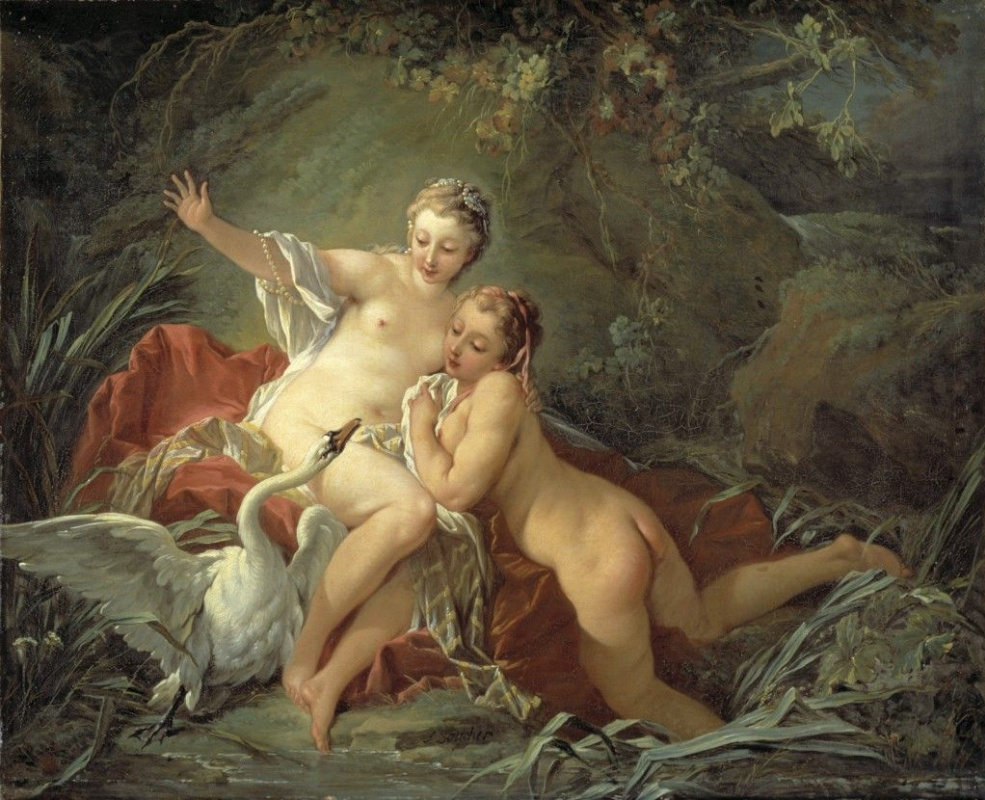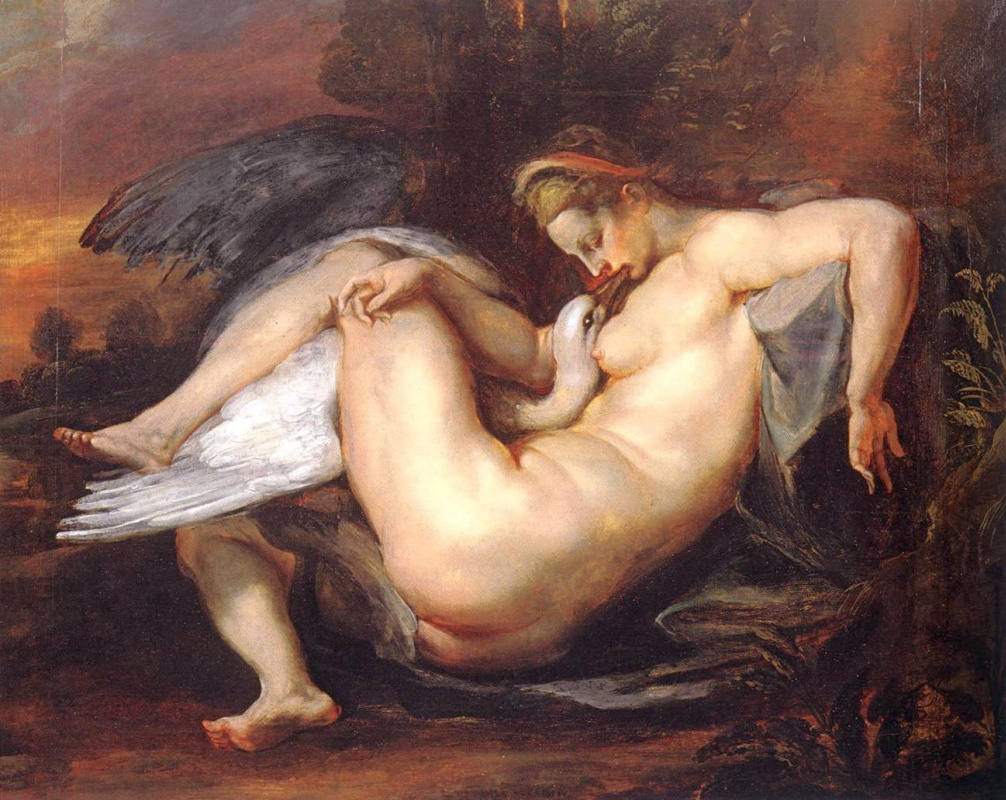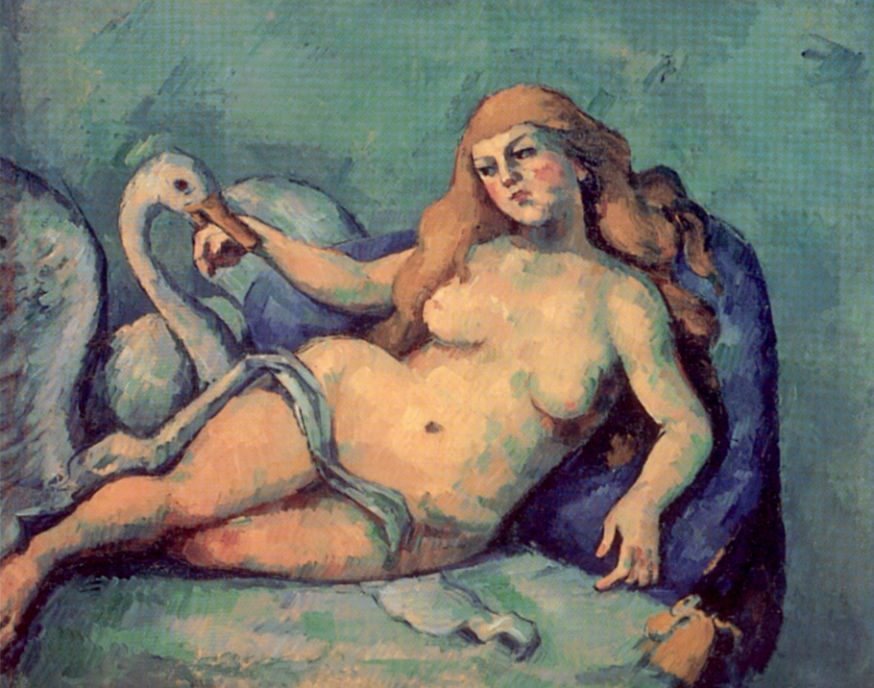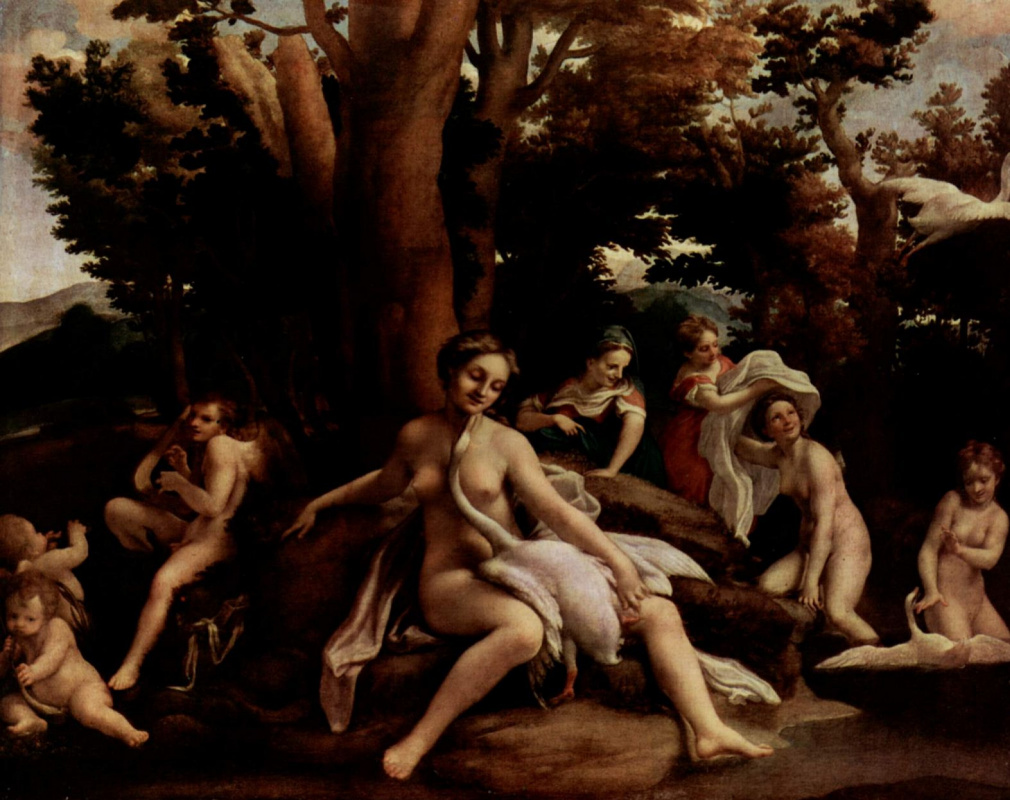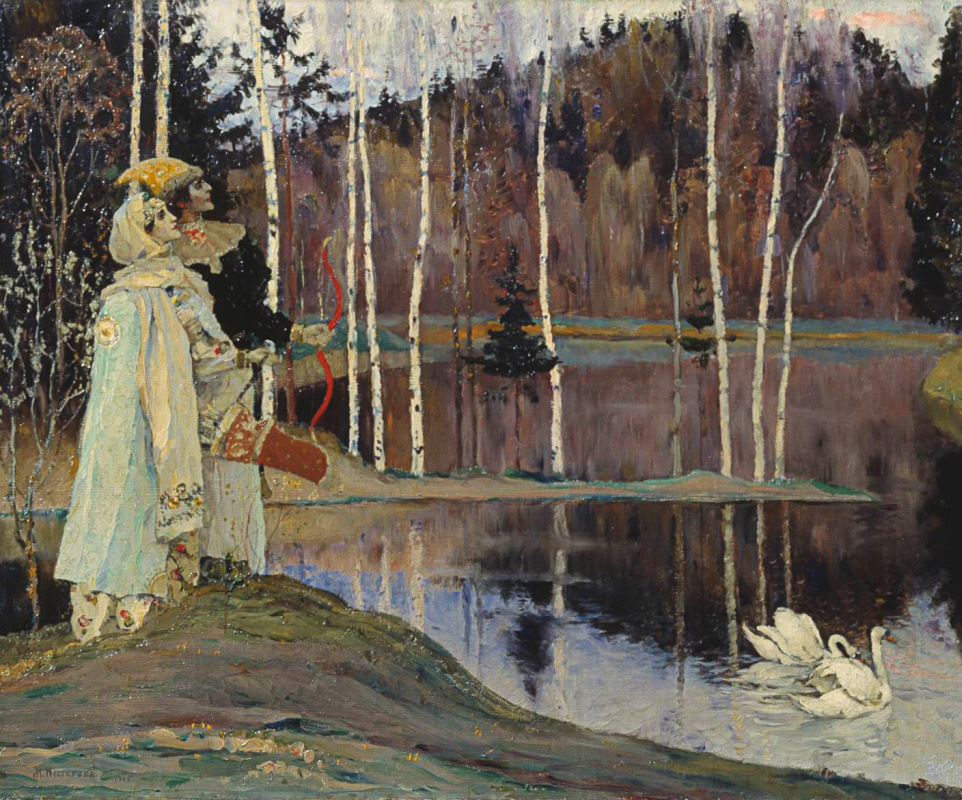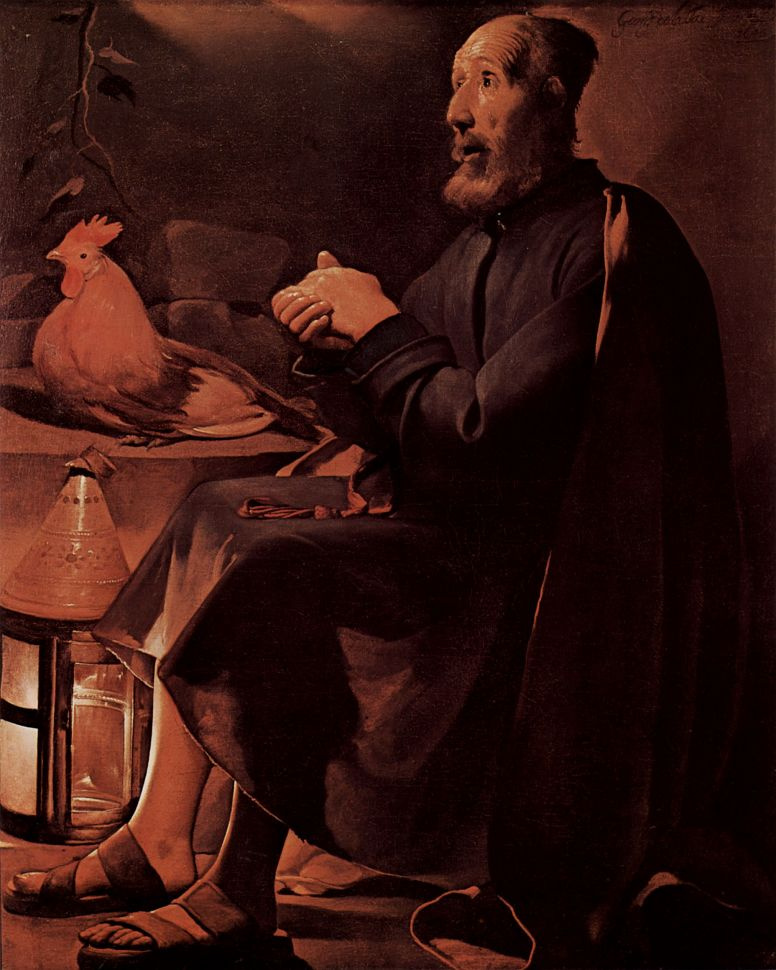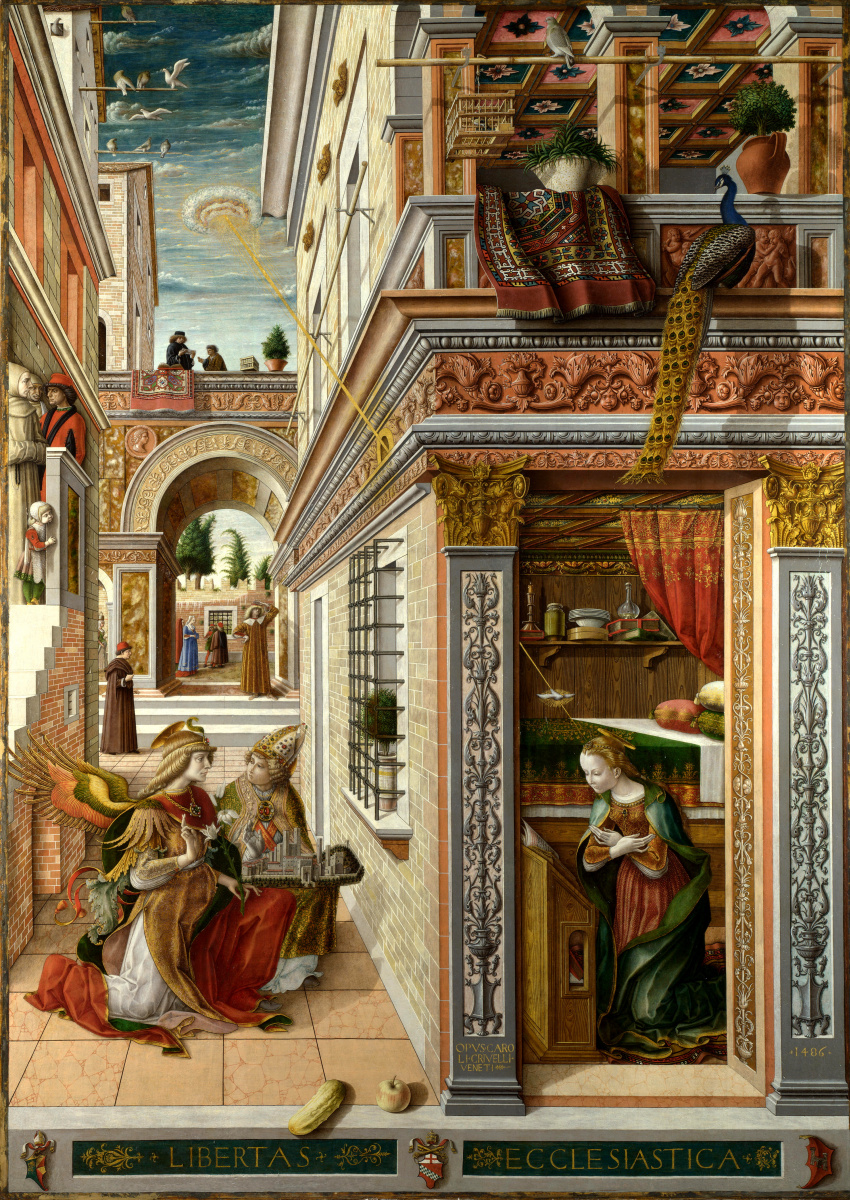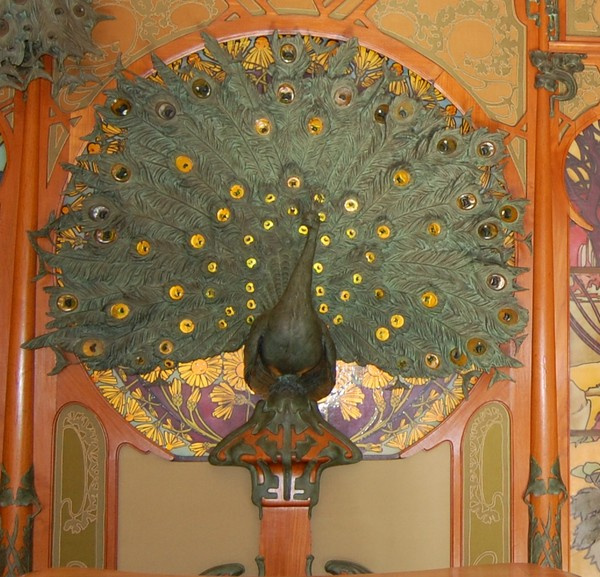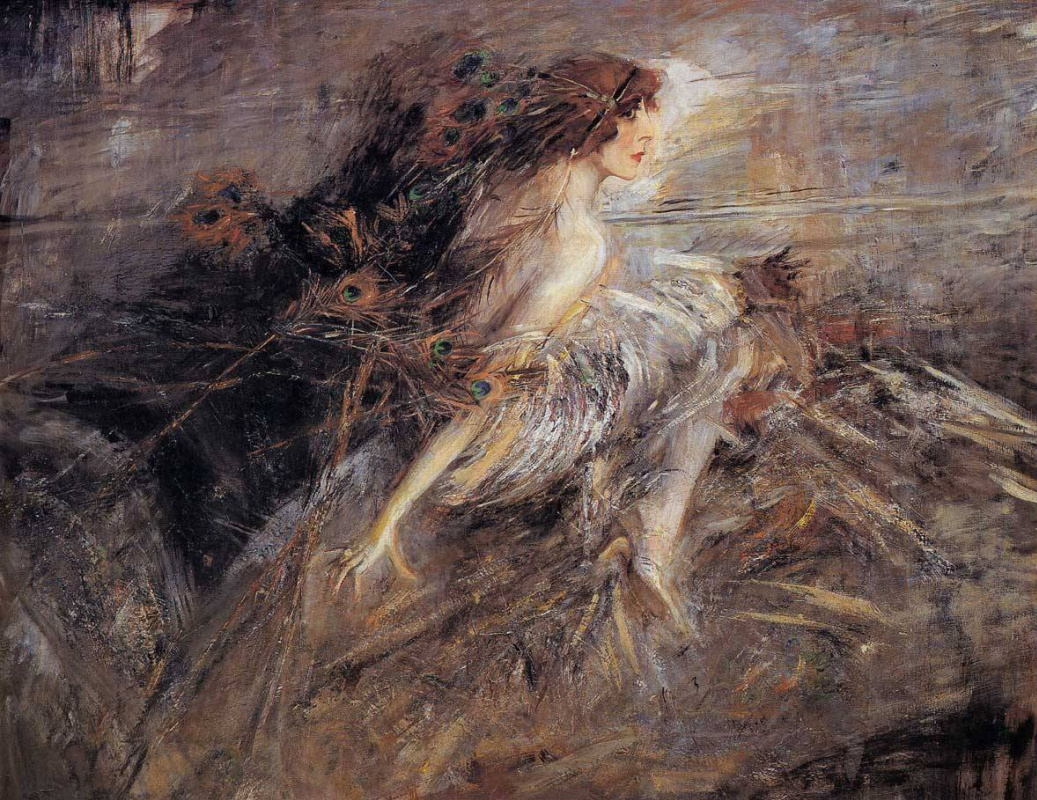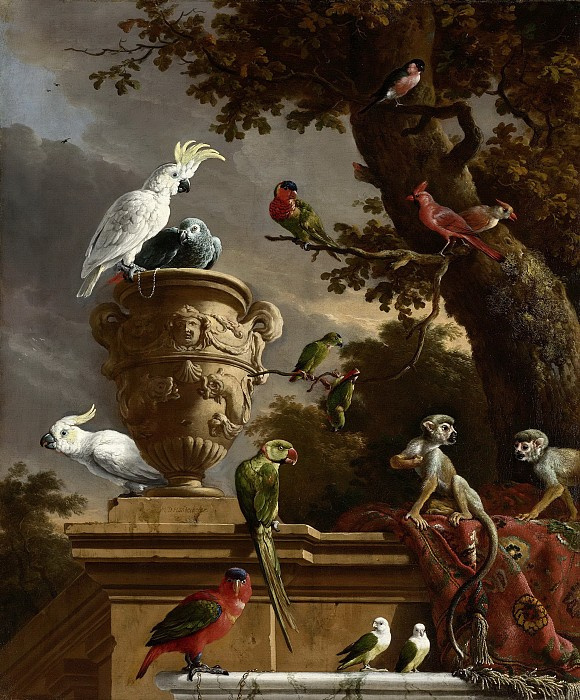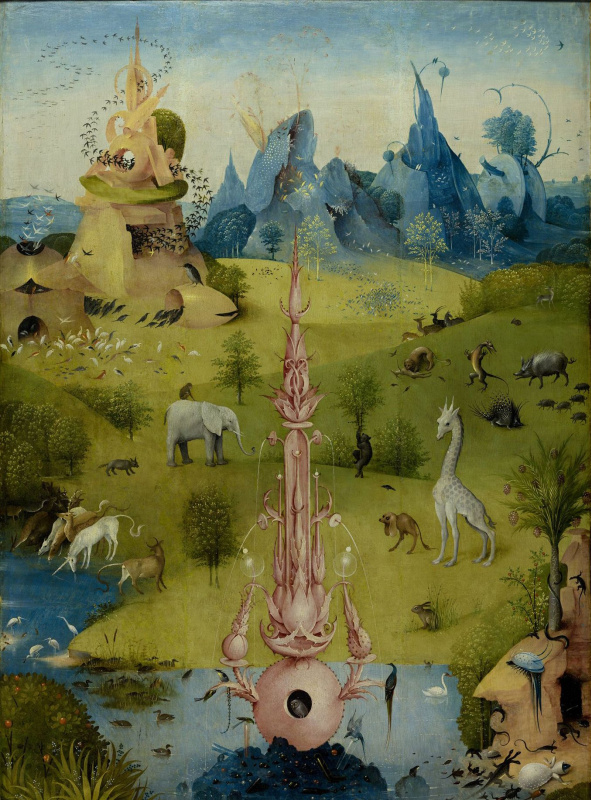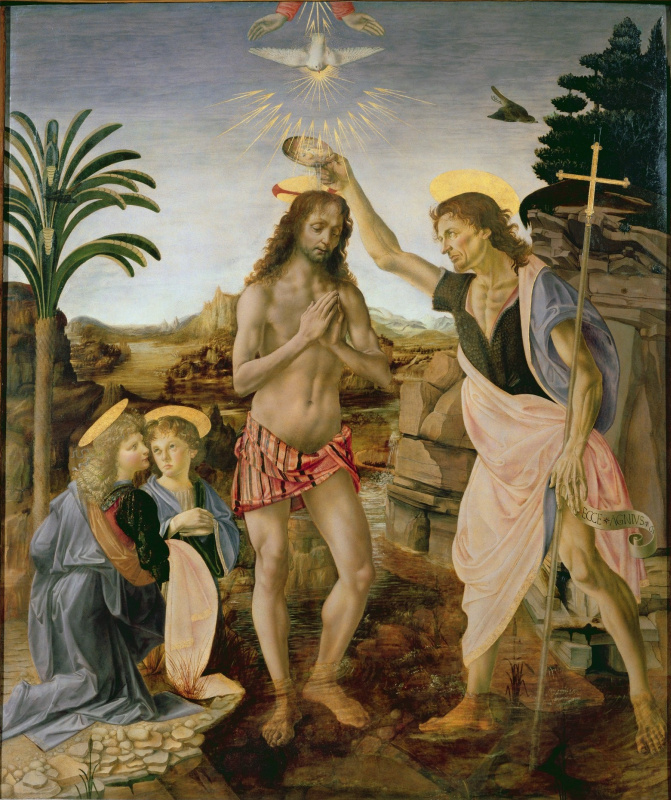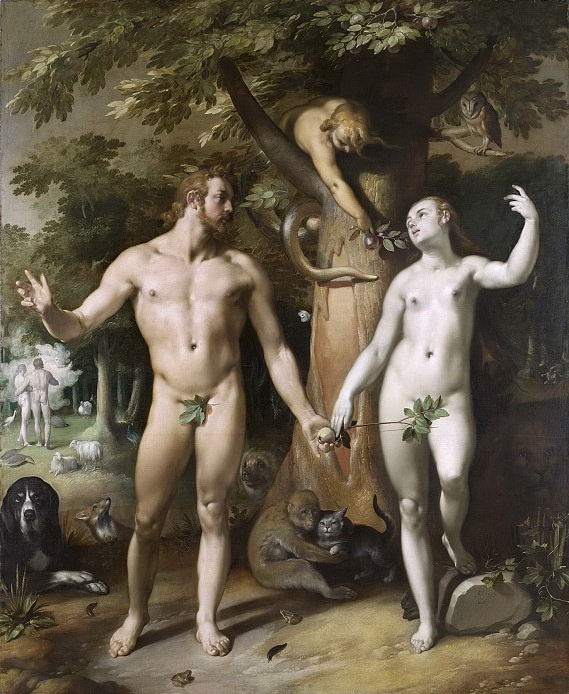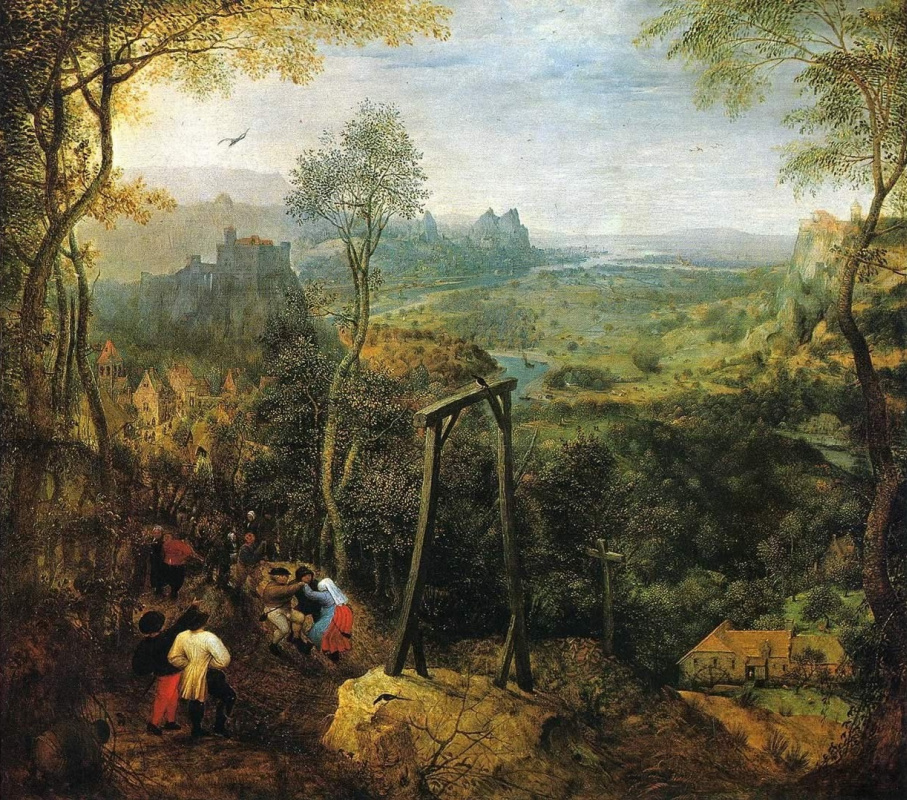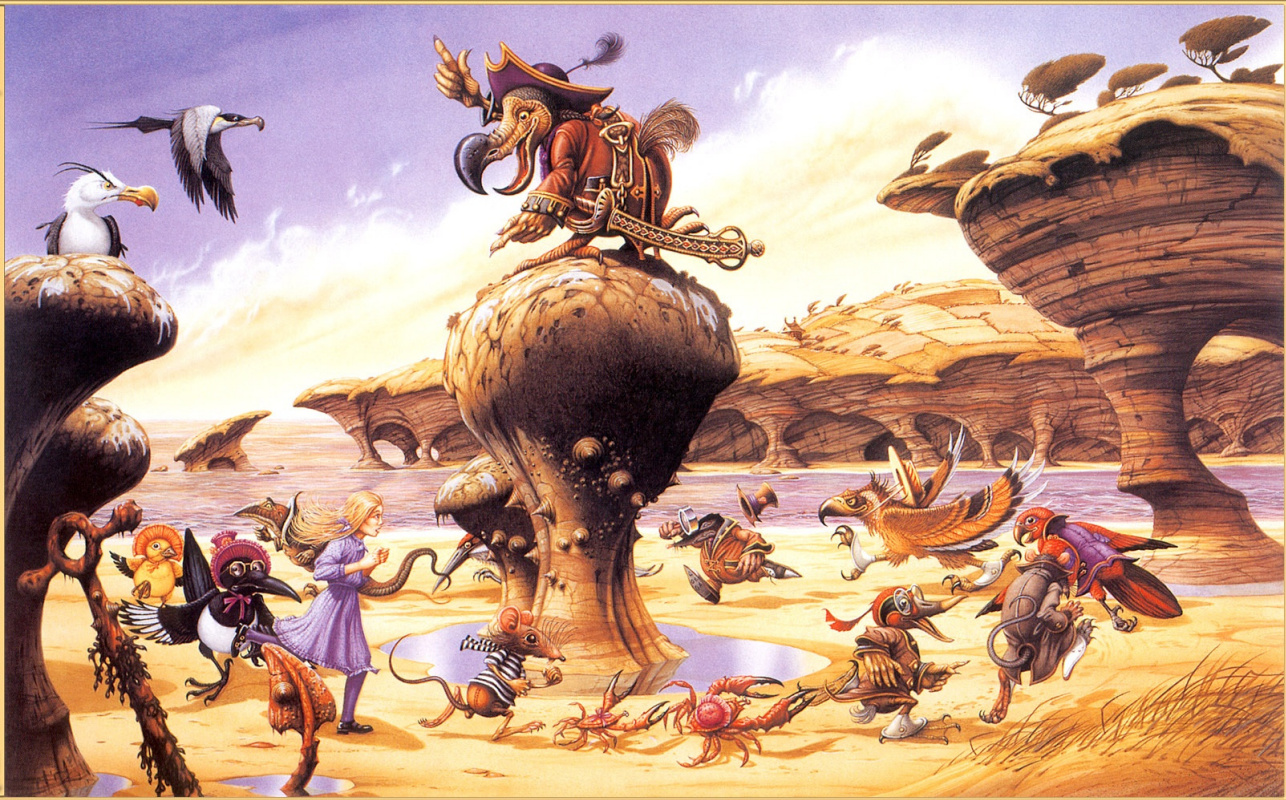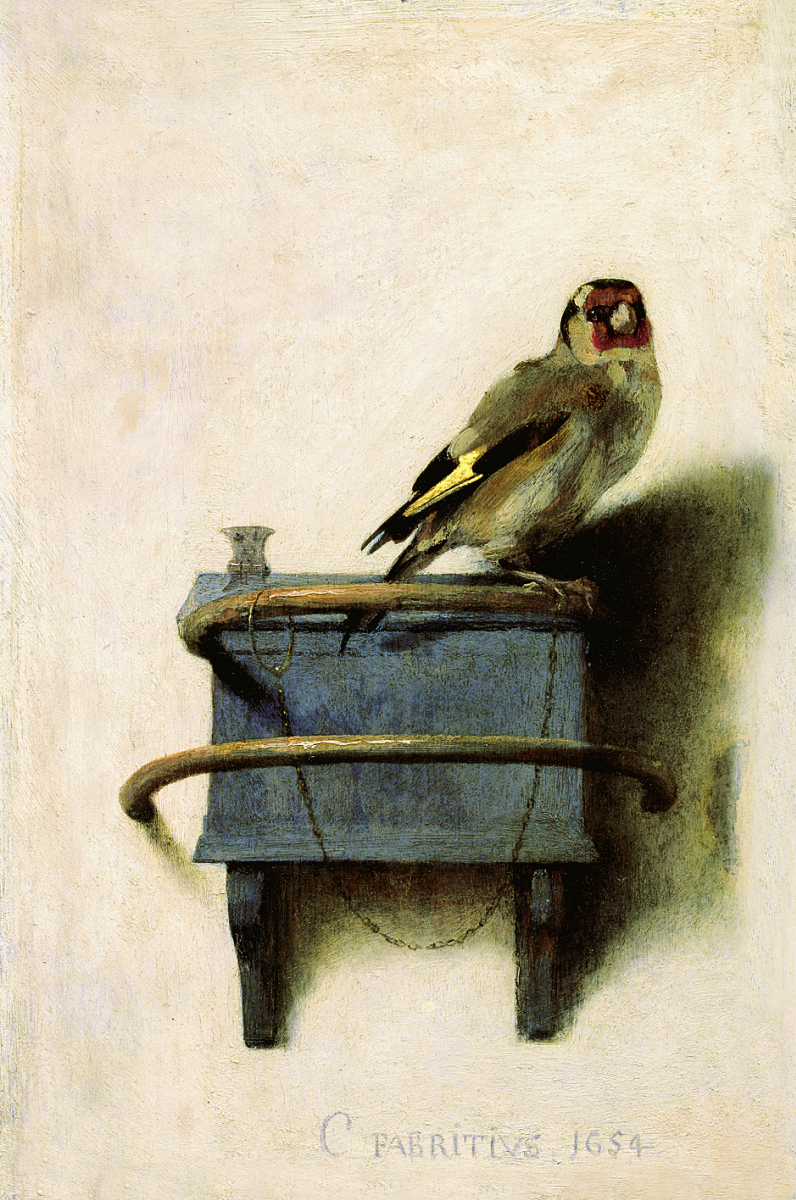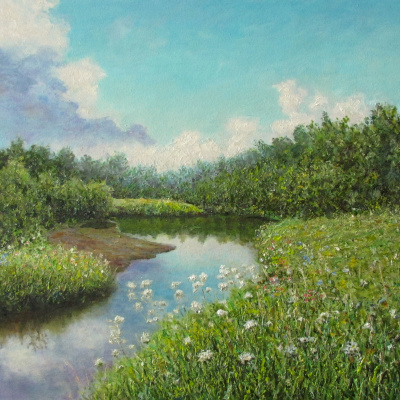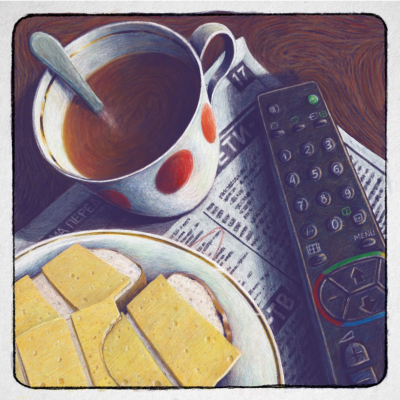Birds have always been admired for the abilities that nature deprived people of. Neither can we fly beyond the clouds towards the sun, nor flap our wings someplace warm… Of course, the artists did not ignore the light-winged representatives of the fauna, where they play their special role: to begin with, the world egg is a universal symbol of the origin of life. Let’s continue exploring entertaining ornithology.
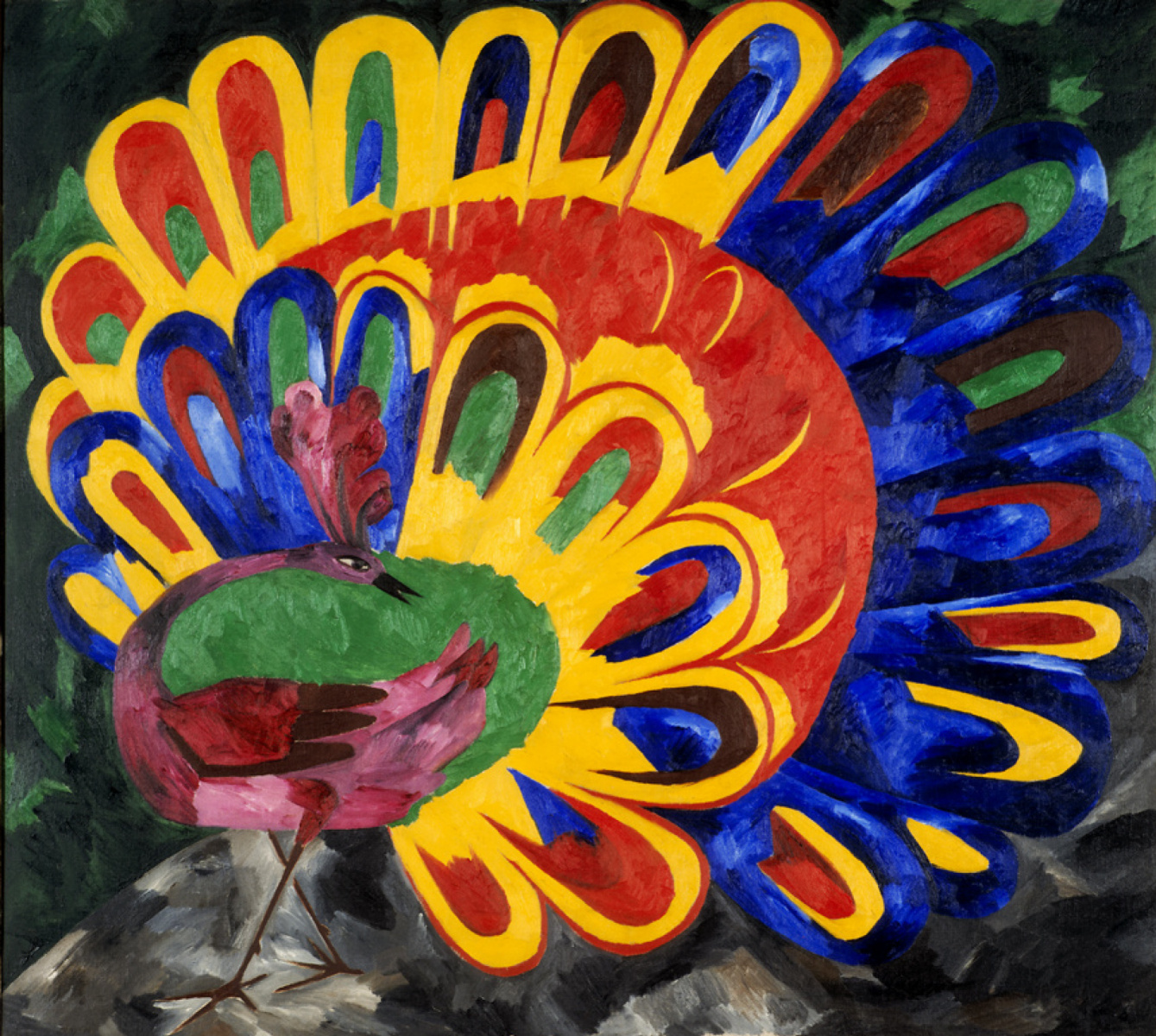
Swan, rooster, peacock and goldfinch. Are they the Lord's beloved creations?
The Believers have been trying to find God’s signs and lessons in every living creature. For example, the large Grabow Altarpiece (or Petri-Altar) by Master Bertram from Minden portrays a swan, a rooster, a peacock and a goldfinch, surrounding their Creator. Perhaps the artist’s choice is subjective and not really convincing in terms of the importance of these birds in human destiny, but let’s have a closer look on the given quartet.
The altar of the Apostle Peter from Grabovo
XIV century
Goldfinch. A bird may be known by its flight
The bird, flying highest in the depicted scene, is the goldfinch. Cheerful and clever goldfinches are loved for their singing and bright plumage, for the fact that they can be trained … Moreover, the little braveheart distinguished itself in front of the Holy Father. In the Catholic tradition, there was a legend that the dexterous bird removed a thorn from Christ’s brow. It was then that a drop of blood accidentally fell on the bird’s feathers, and its image in religious plots is thus a symbol of Christ’s future sacrifice for the redemption of human sins on the behalf of all humanity.
Holy family
1650, 263×210 cm
White swans as God's messengers
The perfection of the snow-white plumage of these graceful birds is the testimony of the Creator’s genius, and in Christian symbolism swans are one of the attributes of the Virgin Mary, symbolizing her virtues.Transformation into a beautiful bird was quite common among the heroes of ancient Greek myths, there was also a generalized concept — "Cycnus", which means "swan". Apollo’s, Ares’s and Poseidon’s sons, one of the suitors of Penelope, and Phaethon’s friend were all known as Cycnus… It is not surprising that the almighty and loving Zeus also resorted to transformation in order to marry Nemesis and Leda. Leda laid an egg, from which hatched the Dioscuri brothers, embodying the morning star and the evening star, and Helen — the epitome of female beauty. Not the divine, but the human one. As the Latin epigram has it, "There are three in this egg, but they will be granted a different fate: two of them will become stars, and one — cause the Trojan War."
Atomic Leda
1949, 61.1×45.3 cm
This myth inspired many artists, because it immortalized the union of earthly and heavenly, material and spiritual, praised men’s boundless passion towards their chosen women, and the magic of female beauty that makes men forget about everything.
Naturally monogamous swans — these noble birds — have become for people the embodiment of devotion, faithful and pure love.
Two Lada
1905, 61×74 cm
Apart from being faithful, swans are also known for their "song". According to ancient legends, swans sing one song in their life — just before they die. In fact, these birds never sang. And they never will. But the myth has been preserved and embodied in the famous image of Slavic folklore: The Swan Princess left her spouse when he managed to spy on how she shed feathers. "The swan song" - the last moments of life of the fairy princess — was depicted by Mikhail Vrubel. His heroine’s look is full of dismay and fear: she made a fatal decision, leaving the mortal world.
The Swan Princess
1900, 142.5×93 cm
When the rooster crows off the hour, don't hesitate to adjust the time...
This bird is best known for waking people up by crowing early in the morning. Roosters are a symbol of not only vigilance, but also resurrection: their crow wakes people from sleep, and the awakening, in the opinion of Christians, should remind believers of the Last Judgment and the resurrection of the dead in general.A rooster is the emblem of Peter’s denial and repentance. The reason for such symbolism is unanimously confirmed by all four evangelists. According to their records, Jesus Christ revealed to his faithful disciple that on the night after the Last Supper, Peter would deny knowing Him three times "before the rooster crows." And it became true. Since then, roosters have become a constant attribute and rebuke of the apostate.
The repentance of St Peter
1645, 95×114 cm
Despite the fact that this pious herald of the dawn was also an attribute of other saints, Gall and Vitus, in Christian allegorical art, the rooster sometimes personified one of the seven deadly sins — Lust. A good rooster crows everywhere.
But in Rembrandt van Rijn’s Night Watch, the rooster on the girl’s belt could be interpreted as a play on the coat of arms of the Dutch Civic Guard. They were called kloveniers (in Dutch, a 'klover' is a type of musket). The word "klovenier" sounds similar to the Dutch klauw — "bird's claw". Each guild had its own emblem, often depicting claws of different birds of prey. The girl in the painting has the sharp, detailed claws of the rooster on her belt. Oh, these amateur warriors!
Over time, this exuberant symbolism
began losing its ground, but some artists had their own sign system and, for example, Marc Chagall’s figurative language organically combined traditionally Jewish symbols — a rooster and a fish, representing the masculine and the feminine, respectively.
Cock
1929, 81×65 cm
Brighter than a peacock
It was quite popular in Ancient Rome to keep exotic birds as pets. The residents of the empire loved their pets so much that they not only eternalized birds in art and poetry, but even buried them together with their owners. The peacock was considered the emblem of the empress and her daughters, while the eagle was the bird of the emperor.
The Annunciation with Saint Emidius in Ascoli Piceno
1486, 207×147 cm
The glorious tail, covering the wide spectrum of all the colours of the rainbow, was perceived as a universal sign of the unity of Being. The ability of this exotic bird to shed its' wonderful feathers and re-grow them caused the myth about it being imperishable. Most likely, peacocks were associated with a phoenix — a mythical bird, rising from the ashes. This idea was adopted by Christian teaching, and the image of the peacock entered iconography as a symbol of renewal and resurrection of Jesus Christ — this can be seen in mosaics and wall paintings in the catacombs of Ancient Rome.
Quite often peacocks were depicted in the images of the grotto in Bethlehem where Christ was born: two peacocks, drinking from the same Cup, symbolize a spiritual revival.
Quite often peacocks were depicted in the images of the grotto in Bethlehem where Christ was born: two peacocks, drinking from the same Cup, symbolize a spiritual revival.
The peacock’s tail reminds the hundreds of eyes that are watching us. Because of this, peacocks are also associated with the Eye of Omniscience. The peacock feather is an emblem of Saint Barbara.
In terms of the alternation of night and day, these birds represent twilight. The peacock with a snake in its beak signifies the victory of light over darkness.
In terms of the alternation of night and day, these birds represent twilight. The peacock with a snake in its beak signifies the victory of light over darkness.
But we must not forget that the church called for leading a modest, humble life, which turned the arrogant peacock, spreading its tail, into the personification of the sin of pride, luxury and vanity. In the Baroque
era, in the scenes of the road to Calvary, Jesus, stripped of his clothes, redeems people and atones for their sin of vanity, which is represented by a peacock depicted next to him.
In Russia, only a very wealthy person could afford to keep these exotic birds and all the qualities that people hated in the landlord were transferred to the "landlord's bird". Therefore, in Russia, the peacock is a popular allegory of arrogance, complacency and vanity.
In Russia, only a very wealthy person could afford to keep these exotic birds and all the qualities that people hated in the landlord were transferred to the "landlord's bird". Therefore, in Russia, the peacock is a popular allegory of arrogance, complacency and vanity.
For Pre-Raphaelites
, this beautiful bird is one of the favorite symbols — "beauty for the sake of beauty."
Art Nouveau artists liked to use peacocks as decorative subjects. The interior of Georges Fouquet’s jewelry shop, designed by Alphonse Mucha is on display at the Musée Carnavalet in Paris.
Peacocks have their special place in Natalia Goncharova’s work. They were her own symbol, the symbol of her art and the sign of the unity of Being, rooted in ancient cultures. The artist painted the same peacock in five different styles, but only two of them have been preserved ("Egyptian" style and "Russian embroidery" style).
The Marquise Luisa Casati, the famous socialite of the 20s of the 20th century, often employed the peacock as an accessory to her avant-garde
fashions as well as to the dramatic costumes she wore to her many famous masquerade balls. The peacock’s feathers rich with the colours of the rainbow perfectly matched the Marquise’s extravagant behaviour. At one ball, Luisa Casati wore a diadem of peacock feathers. At another, she appeared as a golden goddess leading a peacock on a leash.
Portrait of the Marquise of Louise Kazati
1913, 136×186 cm
A parrot. A bird does not sing because it has an answer. It sings because it has a song
These funny inhabitants of tropical forests, which were brought to Europe in ancient times, also made it to iconography. The ancient Romans respected them for their exoticism and ability to imitate human speech. It can be seen in a Roman mosaic of the 3rd century, which depicts two birds one above another, facing opposite directions: a guinea fowl below, and a parrot above. The guinea fowl represents the earthly, lower, spontaneous feminine. These birds are distinguished by a dense "body", and, upon hearing a suspicious noise, run away, forgetting both the eggs and the chicks. Parrots are a different story: they are beautiful, ready to fearlessly fight for their chicks and freedom, and "speak" almost like people. In general, they are the birds of higher flight, and for ancient connoisseurs of the fauna, parrots represented the dominant masculinity and intelligence in this seemingly illogical duet.
Madonna of Canon Georg van der pale
1436, 122×157 cm
In the Middle Ages, these feathered visitors from the eastern countries still did not lose feathers from the "tail of myths" about themselves. It was believed that parrots' feathers don’t soak in the rain, because the birds themselves can cause rain. Due to this ability, the bird was considered one of the symbols of the Virgin Mary, who retained her virginity and purity.
In Christian symbolism, parrots are interpreted as people, since they can perfectly imitate human speech. It was this interpretation that was popular in Dutch painting. When we look at a still-life with fruit by Balthasar van der Ast, at first glance, everything seems simple: two parrots knocked over a basket of fruit that scattered on the table. Quite a common thing: the birds were used to show wealth and abundance.
But the Dutch didn’t fail to encrypt their informative message here: the little parrot doesn’t pay attention to the fly nearby — the earthly temptation — and, opening its' beak, tries to imitate the audible sounds. And the large parrot stares intently down, at the table with two pears — "human" symbols: a pear-tree is considered Eve’s ancestral mother.
The tradition of symbolic reading of Dutch painting was rapidly fading away at the turn of the 18th-19th centuries, and later on the viewers were given freedom to decipher the moral motto of the paintings on their own. And birds from overseas were no longer a wonder, becoming a familiar attribute of extravagant gentlemen.
Birds are very popular characters in painting, which for centuries have taken their place in iconography.
The owl is not only a symbol of wisdom, but also a forerunner of death, evil. Due to their all-black plumage and the eating of carrion, ravens are considered a sign of the devil.
In Greek mythology, the swallow is a bird associated with Aphrodite, and in Christian symbolism it is a symbol of thirst for spiritual food and is considered one of the incarnations of Jesus Christ.
Pelicans are an allegory of self-sacrifice.
Magpies became a symbol of loquacity and corruption.
Doves are pure and sinless souls. There is even a legend that the devil and witches can turn into any creature except a pigeon and a sheep.
Quails represent spring and renewal, partridges — voluptuousness.
The owl is not only a symbol of wisdom, but also a forerunner of death, evil. Due to their all-black plumage and the eating of carrion, ravens are considered a sign of the devil.
In Greek mythology, the swallow is a bird associated with Aphrodite, and in Christian symbolism it is a symbol of thirst for spiritual food and is considered one of the incarnations of Jesus Christ.
Pelicans are an allegory of self-sacrifice.
Magpies became a symbol of loquacity and corruption.
Doves are pure and sinless souls. There is even a legend that the devil and witches can turn into any creature except a pigeon and a sheep.
Quails represent spring and renewal, partridges — voluptuousness.
The era of scientific discoveries attracted attention of naturalist artists to the animal world.
A lot of paintings were full of exotic birds. Lewis Carroll wrote the novel for Alice Liddell, and John Tenniel wasn’t the only one who depicted the dodo bird and the cricket scene.
However, public attention can be drawn to the "simplest" representatives of the world of birds. Thanks to the novel Goldfinch by Donna Tartt, the picture and the bird form a completely different symbolic series.
Goldfinch
1654, 33.5×22.8 cm
"… Self-consciously, I leaned forward and looked at the painting. It was a small picture, the smallest in the exhibition, and the simplest: a yellow finch, against a plain, pale ground, chained to a perch by its twig of an ankle.
"He was Rembrandt’s pupil, Vermeer's teacher," my mother said. "And this one little painting is really the missing link between the two of them — that clear pure daylight, you can see where Vermeer got his quality of light from. Of course, I didn’t know or care about any of that when I was a kid, the historical significance. But it’s there."
I stepped back, to get a better look. It was a direct and matter-of-fact little creature, with nothing sentimental about it; and something about the neat, compact way it tucked down inside itself — its brightness, its alert watchful expression — made me think of pictures I’d seen of my mother when she was small: a dark-capped finch with steady eyes.
"It was a famous tragedy in Dutch history," my mother was saying. "A huge part of the town was destroyed."
"What?"
"The disaster at Delft. That killed Fabritius. Did you hear the teacher back there telling the children about it?"
…a gunpowder factory exploded at Delft in the 1600s… Fabritius was killed and his studio was destroyed. Along with almost all his paintings, except this one. He was one of the greatest painters of his day, in one of the greatest ages of painting. Very very famous in his time. It’s sad though, because maybe only five or six paintings survived, of all his work. All the rest of it is lost — everything he ever did," but that’s a whole other story. You can also find it on Arthive: A walk around the exhibition of Dutch painting with the characters of Donna Tartt’s novel The Goldfinch
"He was Rembrandt’s pupil, Vermeer's teacher," my mother said. "And this one little painting is really the missing link between the two of them — that clear pure daylight, you can see where Vermeer got his quality of light from. Of course, I didn’t know or care about any of that when I was a kid, the historical significance. But it’s there."
I stepped back, to get a better look. It was a direct and matter-of-fact little creature, with nothing sentimental about it; and something about the neat, compact way it tucked down inside itself — its brightness, its alert watchful expression — made me think of pictures I’d seen of my mother when she was small: a dark-capped finch with steady eyes.
"It was a famous tragedy in Dutch history," my mother was saying. "A huge part of the town was destroyed."
"What?"
"The disaster at Delft. That killed Fabritius. Did you hear the teacher back there telling the children about it?"
…a gunpowder factory exploded at Delft in the 1600s… Fabritius was killed and his studio was destroyed. Along with almost all his paintings, except this one. He was one of the greatest painters of his day, in one of the greatest ages of painting. Very very famous in his time. It’s sad though, because maybe only five or six paintings survived, of all his work. All the rest of it is lost — everything he ever did," but that’s a whole other story. You can also find it on Arthive: A walk around the exhibition of Dutch painting with the characters of Donna Tartt’s novel The Goldfinch
Cover illustration: Bright Sun (Egyptian style)
1911
1911






